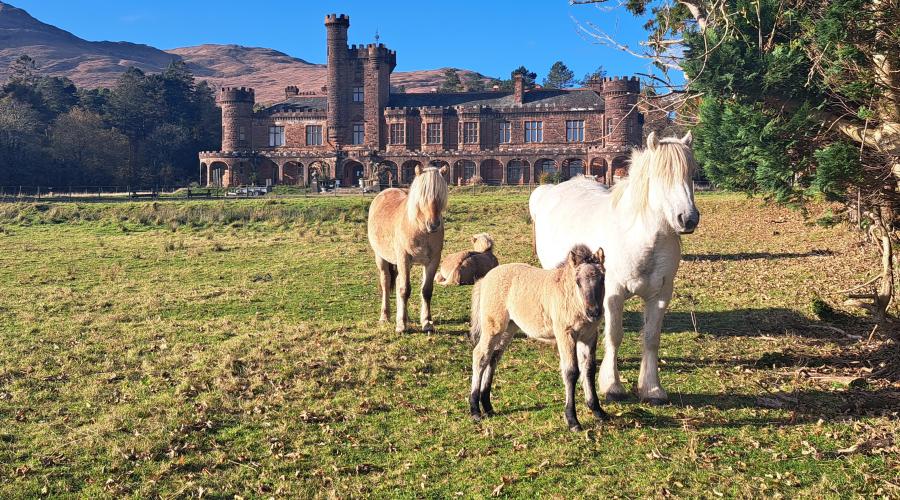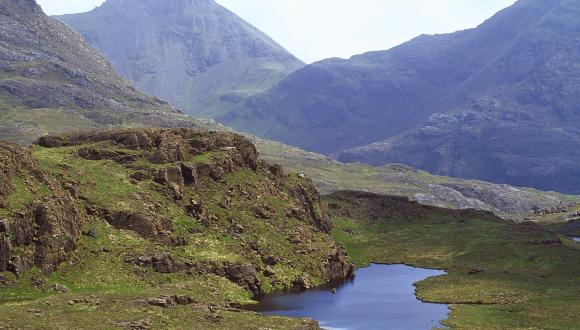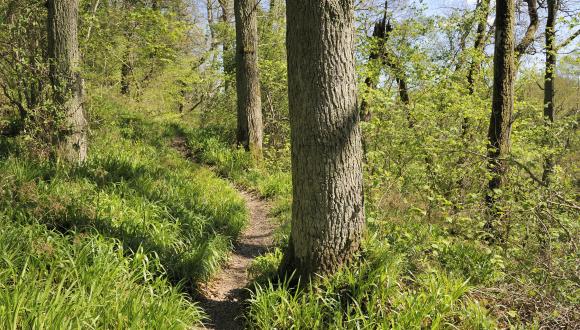
Rum National Nature Reserve welcomes newest residents
28 December 2023
Rum National Nature Reserve (NNR) welcomed some new residents this year with the arrival of two rare Highland pony foals.
The foals, named Fhuarain and Shellesder, are settling in well to their island home where NatureScot maintains a herd of around 20 ponies.
The translation of the Gaelic Fhuarain means spring or burn, while Shellesder means Iris. Both are the names of glens on Rum.
The Rum ponies are a special island type of hardy Highland pony with ancient bloodlines. The first written record of Highland ponies on Rum dates back to 1778.
The ponies play an essential role in deer management on the NNR, helping to carry out deer carcasses from remote areas to be processed and sold for venison. They are also carefully bred and managed on the island to ensure the long-term survival of this rare breed.
NatureScot’s Rum NNR manager Lesley Watt said: “We are delighted to welcome two new Highland pony foals to the island this year as part of our long-term breeding programme which aims to preserve the ancient, rare bloodlines of Rum’s ponies.
“One of our Rum Highland ponies Soay produced a colt foal in the summer that we have named Fhuarain while another pony Minishal produced a filly foal in September that we have named Shellesder.
“Both of the foals are settling in well and will eventually join the rest of the herd helping with the deer management work on the reserve. Visitors and locals alike can look out for these much-loved residents as they roam freely about the island, most often to be spotted at Harris or Kilmory.”
The ponies are not the only animals helping with conservation on the NNR. Rum is also home to a herd of 11 Highland cattle that help maintain and improve protected grassland habitats on the island that require a delicate balance of grazing.
As large herbivores, the cattle have an important role in grazing back summer growth and breaking up the ground to create controlled disturbance.
The cattle are also used to graze areas that are dominated by purple moor grass to increase species diversity and encourage restoration of dwarf shrub heath habitats. This will also help to reduce the high fuel load of dead purple moor grass leaves and improve resilience to wildfires.
Elsewhere on the island, it was a good year for the breeding colony of Manx shearwater - one of the largest in the world. In 2023, 75% of monitored burrows produced a chick, which is above the long-term average for this long-lived species that only lays a single egg each year.
Rum NNR’s visitor centre also underwent a major overhaul this year. Visitors can enjoy a newly designed centre packed with information about the island’s habitats and species, thanks to a team of volunteers led by Eva Kohle.





